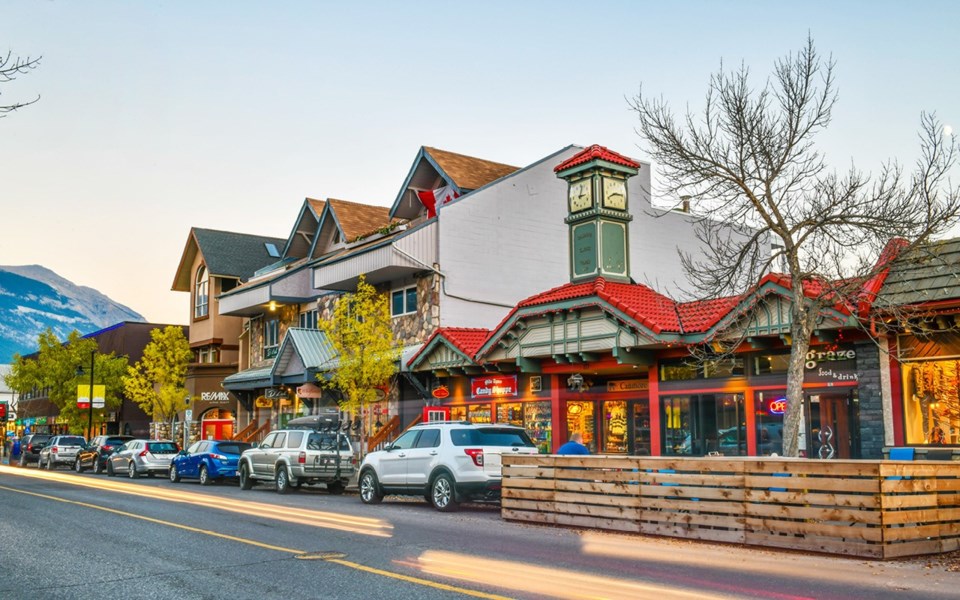CANMORE, Alta.—Towns and cities have been shifting to LED lights, because they're more energy efficient. But brighter isn't necessarily better.
That's the conclusion already drawn in Canmore, the town at the entrance to Banff National Park, which is butting heads with FortisAlberta, an electrical utility. It wants to install LED lights with brightness measured at 5,000 Kelvin.
Other towns and cities, studying the literature as well as looking at LED lights, have concluded that less is better, as Canmore's Andy Esarte, the town's manager of engineering, has already decided. The Rocky Mountain Outlook reported that the town has commissioned a study at a cost of $20,000 to find the right balance.
Lights of more than 3,000 Kelvin "create a harsh glare, making it difficult to see clearly at night," said the International Dark Sky Association.
The American Medical Association, in a 2016 study, warned that too much blue light—as produced with 5,000 Kelvin—can suppress melatonin production, leading to disrupted sleep and other health risks.
The utility disputes some of this contention. "There is no evidence that LED streetlights impact human sleep cycles any differently than high-pressure sodium streetlights that have been used for the past 30 years," said Alana Antonelli, manager of corporate communications and marketing.
She cited a U.S. Department of Energy study that concluded LED lighting poses no more risk than other lighting technology.
But the American Medical Association Council on Science and Public Health issued a report in 2016 warning of potential dangers.
"Although data are still emerging, some evidence supports a long-term increase in the risk for cancer, diabetes, cardiovascular disease and obesity from chronic sleep disruption or shiftwork and associated with exposure to brighter light sources in the evening or night," the report stated.
John Barentine, of the International Dark-Sky Association, suggested that mountain towns look at what Jasper is doing. The town has very harsh, blue-rich 5,000 Kelvin white LED roadway lights. A company called Lumican—a partner with the association, intends to retrofit the town with "warm" white LED lights, down to 1,700 Kelvins. Those lower-Kelvin lights, said Barentine, superficially resemble the old sodium lights with which most people are familiar.
In parallel, Parks Canada intends to apply for International Dark Sky Park status for Jasper National Park. The municipality has shown interest in accreditation as an International Dark Sky Community.
"I hope this turns into a model for similar mountain towns, especially those in (or that are gateways to) parks and similar protected areas," said Barentine. "Jasper is currently very over-lit, and the problem is made worse in the winter when there is snow on the ground. We hope the solution that Lumican is trying to put together for Jasper will make all the stakeholders happy. Better lighting is more attractive to both residents and visitors, improves nighttime safety, and keeps the night sky over the national park dark."
Denver will soon convert 44,000 outdoor fixtures. It plans to hew to a maximum 3,000 Kelvins, which falls closer to the transition between yellow and blue light. The Colorado specifications meet the AMA's recommendation for street lights.
Now reservations and a fee to visit
GLENWOOD SPRINGS, Colo.—Come May 1, you won't be able to drive to the trailhead to Hanging Lake, a charming waterfall and scenic pool of water amid limestone cliffs reached via a relatively easy three-kilometre hike from Glenwood Canyon.
The Forest Service, working in partnership with the City of Glenwood Springs, has made the popular destination one that requires a permit year-round. And from May 1 to Halloween, the only access will be shuttle buses from Glenwood.
The Forest Service began taking steps to limit access after a 23-per-cent increase in the number of visitors in 2016. Altogether, visitation doubled in five years.
This is the third significant attraction along the I-70 corridor in Colorado to which access is being limited. First was the road to Maroon Bells, the pair of 4,267-metre peaks outside of Aspen. There, visitors must take free shuttles during summer and autumn days. Driving there during the evening and early morning is still permitted.
The Forest Service also instituted a permit system for the Conundrum Hot Springs. The springs are located just below timberline, not far from the crest of the Elk Range, between Aspen and Crested Butte. The springs are reached by a hike that has an 850-metre elevation gain across a distance of more than 13 kilometres.
At Hanging Lake, located about an hour west of Vail, visitors will be capped at 615 per day.
Of the user fees collected for the shuttle and the permit system, five per cent will be allocated toward operations, including a ranger equipped to look after the lake and answer questions.




